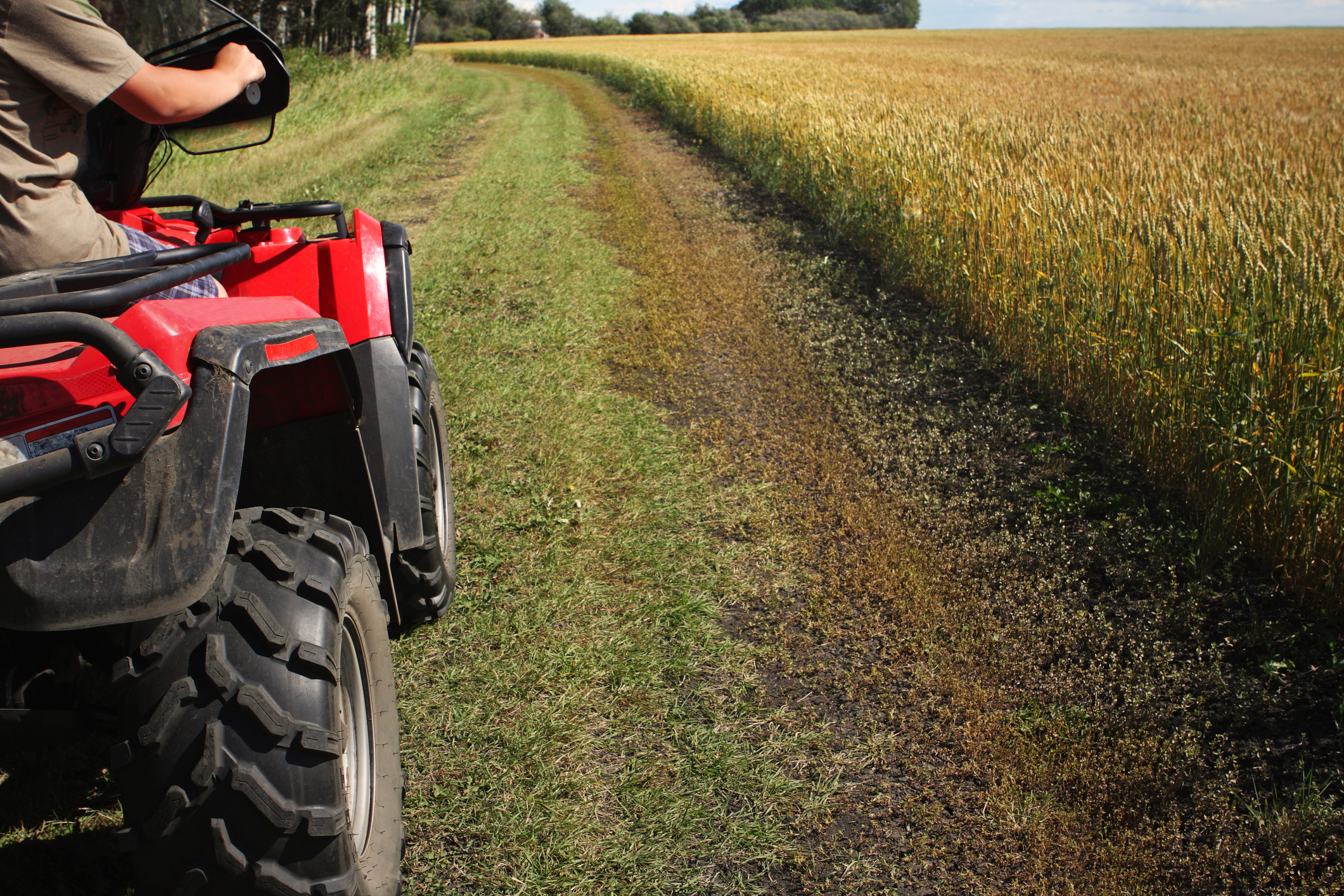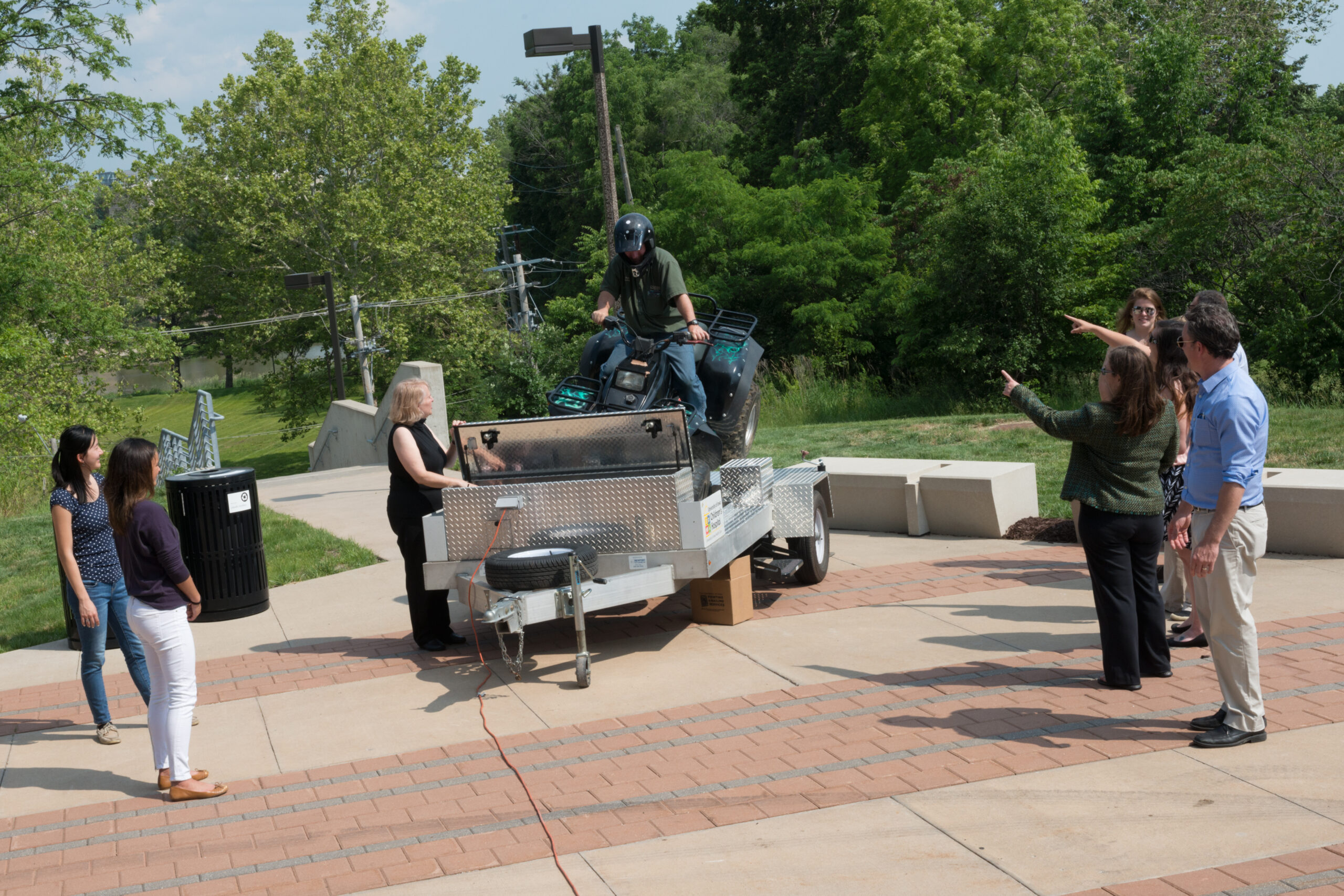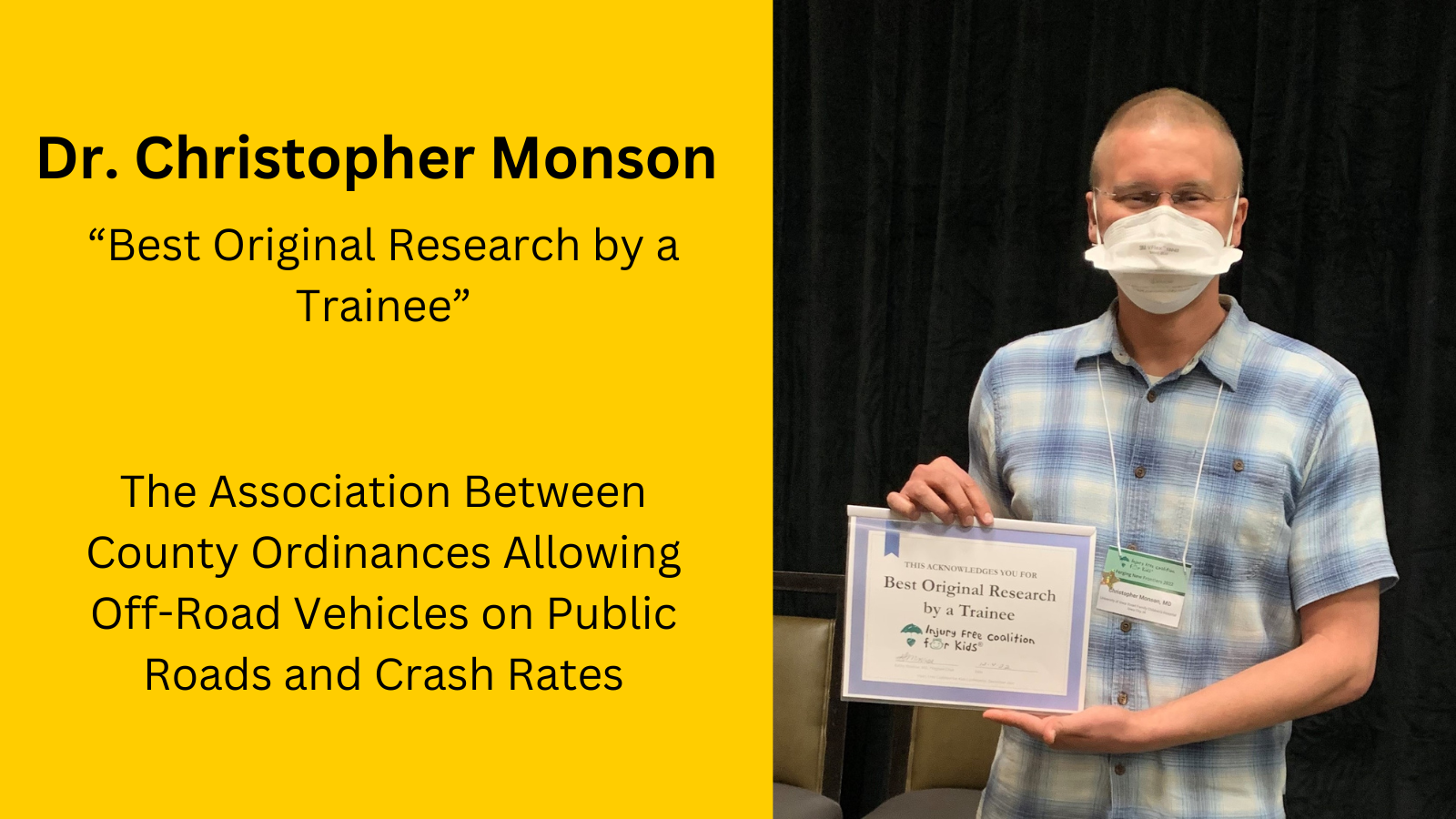Dr. Charles Jennissen, a pediatric emergency medicine physician in the University of Iowa Department of Emergency Medicine and the Stead Family Department of Pediatrics, was 19 years old when his cousin Kenny and a neighborhood boy were killed in an All-Terrain Vehicle (ATV) crash near the dairy farm where he grew up.
“They were both 13 years of age at the time, and they drove out of one of our neighbor’s driveways from the farmhouse and went onto the road, and they were struck by a pickup truck,” he said. “I remember it quite vividly how that had such a tremendous effect on my uncle and aunt’s family and the community, and what a waste it was because it didn’t have to happen.”
For nearly two decades this tragedy has motivated Dr. Jennissen to research and advocate for ATV safety. Last year, he was the lead author of an American Academy of Pediatrics policy statement with recommendations to prevent child and youth ATV-related injuries and deaths. Preventable ATV-related crashes have killed more the 3,000 children younger than 16 years of age between 1982 and 2016 in the U.S.
Here, he discusses how adult-sized ATVs, passengers, and riding on public roads put youth at risk for injuries and deaths, and how parents can keep their kids safer.
See a video excerpt from our interview with Dr. Jennissen here.

How are youth in rural communities affected by ATV injuries?
It’s very common for farmers, ranchers, and kids who are living and working on farms and ranches to use ATVs for work purposes. Most ATV injuries and deaths, both in rural and urban areas, are related to recreational use. About 60% of occupational ATV related deaths occur in agriculture, so this is a problem. We see farmers, ranchers, and kids on these farms and ranches using ATVs for transportation; checking on fields, livestock and crops; repairing and fixing fences; hauling things around; snow plowing; and spraying ditches.
Driving adult-sized ATVs: How does this affect the safety of youth?
A lot of homes with children have just adult-sized ATVs. These are vehicles that are made to be driven by those 16 years of age and older. Yet, a lot of people are allowing their children who are younger than that to drive them. Youth size ATVs are smaller and have lower maximum speeds. For example, those designed for kids 10 years of age and older have a maximum speed of 30 miles per hour. A lot of ATV and injury prevention experts feel that this is a speed that is still too high for kids who are 10 years of age.
In a study we did, we saw an increasing proportion of people dying from traumatic asphyxiation due to the ATV rolling on top of them and not being able to get it off, especially if there’s no one else around to help. This is largely due to the increased size and weight of ATVs that are being manufactured now as compared to the past. Ninety-five percent of youth deaths less than 16 years of age are kids who died driving or riding on an adult-sized ATV. If parents make the decision to allow their child to drive an ATV, they should be on a youth-sized vehicle.
The American Academy of Pediatrics recommends that no kids under 16 years of age drive an ATV. There are many reasons for this, including that the cognitive decision-making required to safely drive an ATV is quite complex. Driving an ATV off-road, you can go anywhere and encounter all kinds of different terrain and obstacles, and decision-making needs to be done on an ongoing basis. It’s very difficult for kids to continuously do that well, and so they often get themselves in trouble.
Riding with or as passengers: How does this affect safety?
Almost all ATVs are designed for an operator only and no passengers. The reason is you need to be able to continually shift your body weight and adjust your grip and footing in order to maintain the center of gravity so that the vehicle doesn’t roll over and so that you don’t lose control. That’s very difficult to do if you have a passenger. Having passengers on the ATV also increases the height of the center of gravity.
Sometimes your best chance to prevent serious injury is to free yourself from the vehicle and try to jump away as the vehicle is rolling over. When you have a passenger, that really prevents you from being able to do that. Many times we have seen passengers were able to escape serious injury because they were able to eject themselves, but the operators were trapped.

Riding ATVs on public roads: How does this affect safety?
ATVs are not designed for use on public roads. They are designed for off-road terrain, so being on the road really puts riders at increased risk of having a crash. ATVs have off-road tires – these are low-pressure tires with knobby treads that are designed to grab off-road terrain. So, when ATVs are on roadways, they can have a very unpredictable relationship with the roadway surface, particularly on paved roads, but also on unpaved roads.
ATVs require a much wider turning radius if you’re negotiating a turn or curve. When people are traveling relatively faster, it can be difficult to determine the speed needed to slow down in order to negotiate a turn or curve. So, what often happens is they’re not able to make a curve or turn because they’re still going too fast and they either end up rolling over on the road or going off the road and end up hitting something or rolling over into the ditch. About 60% of ATV-related deaths occur on public roads, and a lot of this has to do with their design as the majority of ATV roadway crashes do not involve another vehicle.
Tell me about the UI IPRC pilot project looking at Iowa county ordinances that allow ATVs on public roads.
Iowa recently passed legislation allowing ATVs on public roads, particularly unpaved secondary roads. But before this law was passed, individual counties in Iowa were able to pass ordinances allowing ATV roadway use on county roads. Many counties did so before 2022. So, we studied what the effect of passing legislation like that had.
We found that there was about a 60% increase in ATV crashes after counties passed these ordinances as compared to before their passage and as compared to counties who hadn’t passed them. One might ask, “With a 60% increase, what would that do?” Well, based on the most recent 5 years of data, that would result in an additional 776 emergency department (ED) visits and another five deaths per year in Iowa from ATV crashes.
See a video excerpt of this research here.

How can parents prevent ATV injuries in youth?
The American Academy of Pediatrics recommends that no children under 16 years old drive an ATV. But if parents decide to allow a child to be on an ATV, it’s really important for them to enforce the basic safety rules of children riding an ATV. So, they should be on a youth size ATV and not an adult size ATV, they should be wearing a helmet, they should have no passengers on the ATV, and they should not drive on the road. Those are all critical elements to help keep your child a little safer on an ATV.
Also, quite important is to get them educated, and best to have them take a riding class that has on-vehicle instruction. In addition, it’s really important to supervise. We asked FFA (formerly Future Farmers of America) members in Iowa about supervision. Ninety percent of them said that the first time they were in a crash or became injured on an ATV was after they started driving unsupervised.
What types of ATV crashes and injuries are common among youth?
The most common injuries that children and adults get from ATVs are injuries to their arms and legs, like broken bones, sprains, and strains. Head injuries are quite common. We don’t have helmet legislation in Iowa, but if you’re going to be on an ATV, especially on public roads you really should have a helmet on. A large percentage of the ATV-related deaths occur from head injuries. We know that wearing a helmet can decrease the likelihood of a head injury by about 80%.
When ATVs strike youth over their chests and abdomens (e.g., rollover), they can receive crushing injuries to their internal organs including lungs, spleen and liver, and even traumatic asphyxiation when ATVs are trapped on top of their chests or across their necks. We really want people to follow the safety rules and try to help decrease the likelihood of youth having a serious injury.
Published March 28, 2023
Tips for ATV riders from the UI Stead Family Children’s Hospital
Some of Dr. Jennissen’s ATV Research Publications:
Recreational off-highway vehicle exposure, safety behaviors and crash experiences among adolescents
Pediatric and adolescent injury in all-terrain vehicles
Age-based risk factors for pediatric ATV-related fatalities